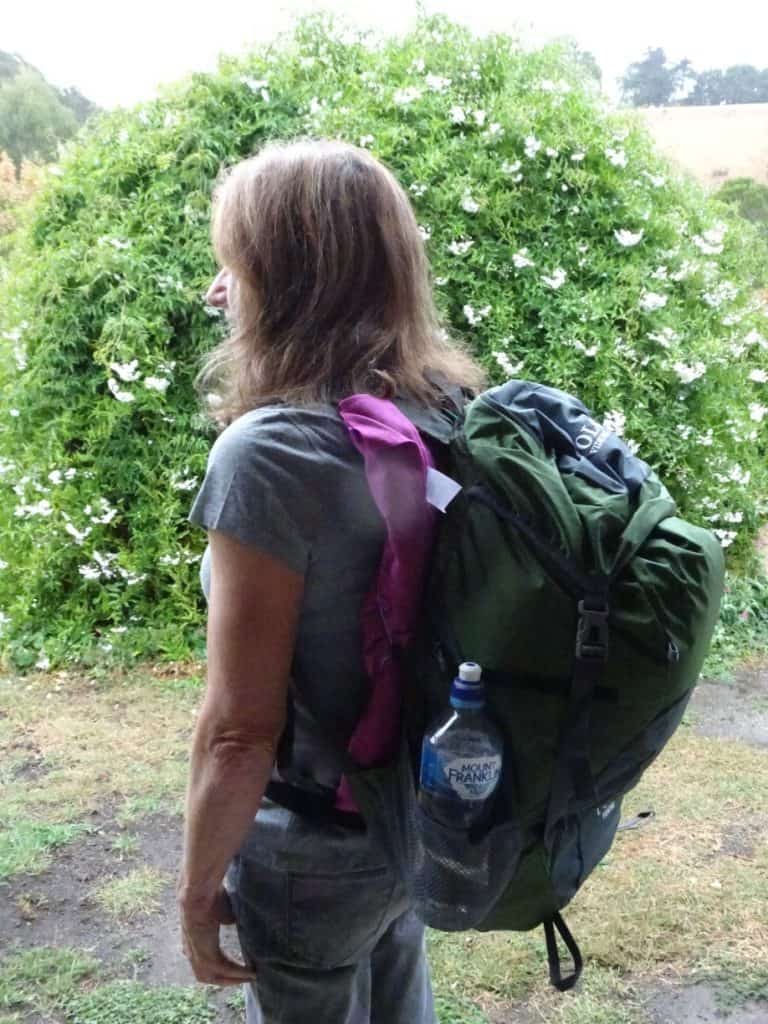Recently I bought a couple of cheap approx 40 litre packs from Amazon for less than US20 each. I thought these would be a good recommendation to someone who wanted to begin hiking on a small budget. The first thing you need after all is something to comfortably and reliably carry your stuff in. I bought this one for US$ 17.99 and this one for US$19.99. Straight out of the bag the packs weighed 335 grams and 382 grams on my scales.
Vidong Polo:
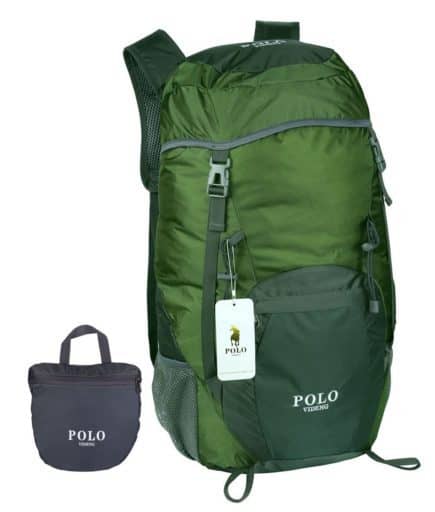
The Vidong Polo was lighter than the G4Free and claimed to be 2 litres bigger; otherwise they are pretty well identical. Both of them look to me to be made of a quite robust material which should take quite a lot of use, and are generally well made (as well as $250 back packs anyway!) I could fit all my gear for a trip of 4-5 days in either. For a trip of more than a week, there is plenty of room to stow an extra compression sack underneath the lid. Notice the ‘spare’ length in the compression straps.
G4 Free:
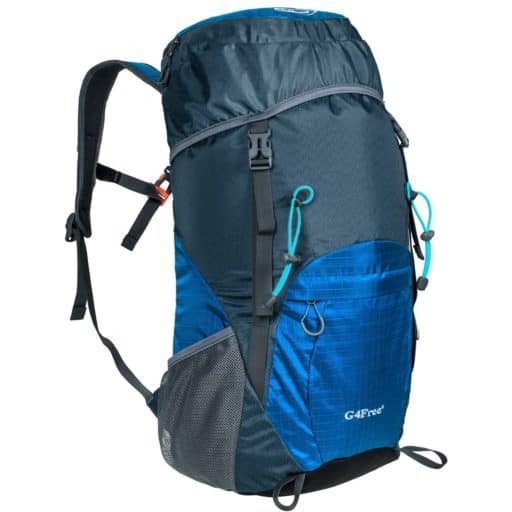
First I stripped the Polo down to 315 grams. After my modifications the Polo weighed pretty much 350 grams. I could cut away another possibly 50 grams if I wanted eg to sacrifice a couple of pockets, lid, tie-out loops etc. This is a pretty great weight!
I think it is a good idea to start on your DIY backpack ‘career’ by doing some ‘mods’ to a cheap existing pack like this as you learn so much. For example, I learned that the hip/waist belt on every pack I own is in the wrong place! I first sewed it on pretty much in the manner that such things are ‘always’ attached (ie on the ‘flap’ where the bottom ‘anchors’ of the back straps are), and it just didn’t work especially for Della, which surprised me as these are quite ‘short’ backpacks which ought to be eminently suitable for her. She is a very neat 5 foot and around 40 kilos.
This led me to the other major thing I learned which is that practically every back pack I own is too long for me, (I am am approx 5’7″) which is why I have often found them uncomfortable – and Della has found them well-nigh impossible.With the belt sewn on at the bottom of the pack there is 16″ from the point of attachment of the shoulder straps to the top of the belt. This is so much better than the usual ‘minimum’ of 18″ that you probably need to buy one of these packs just to try that out, if nothing else.
Also, because the belts are ‘normally’ sewn in the wrong place (and all the way to the sides) they are also much wider than they need to be which nonetheless does not make them work better. The converse is the case. I have sewn the belt on (just in the middle six inches) so that when you cinch it up it tightens around your entire torso instead of ‘jutting out’ at the sides. This provides so much better grip at a lower tension that the pack has no inclination to slip down and take your trous with it! But it also transfers the load so much better that these unpadded straps are not a problem at all. They are just holding the pack from falling off your shoulders, which is as it should be.
I have already noted that back packs are normally constructed too straight. They need to curve so they naturally swing into the ‘small’ of your back and stick there, just as this one does, and these are reputed to do (You will note that the ‘Exodus’ weighs 454 grams). This would involve cutting a curve into the side panels if you were making your own. This pack is short enough that it does that naturally.
I first of all got rid off the elastic straps at the top. There is nothing I want to attach here, but if there is later on I will construct lighter ones out of 1mm dyneema and a micro cord lock (approx 1 gram each). I also similarly replaced the cinch cord at the top of the pack. 20 grams was saved here.
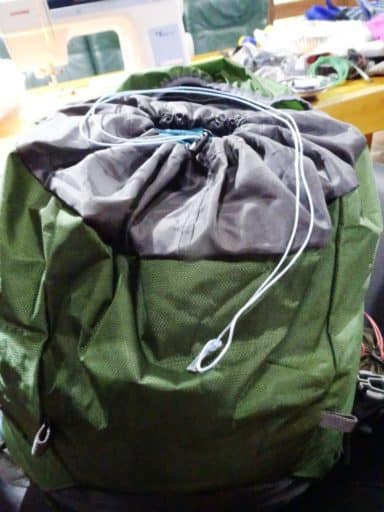
I wanted to attach a sit pad to the back and try to do something to reduce the wet back phenomenon. I sewed four gross grain ribbon loops, then used the above arrangement of dyneema and a micro cord lock. I have found this works very well and weighs very little. i don’t like elastic. it is heavy, absorbent, perishes and breaks too easily. Dyneema is bullet proof!
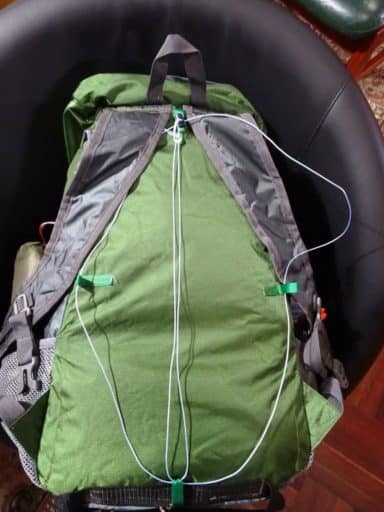
I also reinforced the back pack straps with a piece of 1″ webbing and sewed them through a couple of times.You can see this stitching at the top of the previous photo. You will also notice that I have constructed two cloth ‘tubes’ by hemming the internal pocket, then sewing on a piece of tape above to extend the tube the full length of the pack. Those two carbon fibre tubes are only 3mmm but are enough to create some solidity and load transfer. They weigh less than 3 grams together.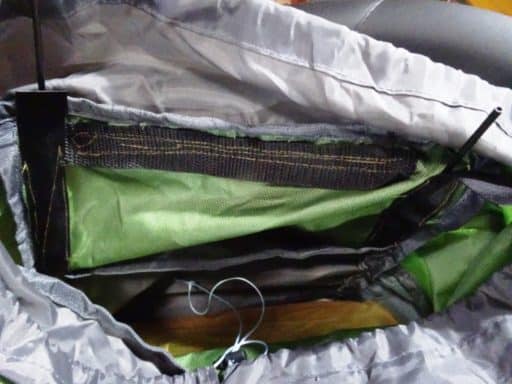
I sewed a couple of side straps (with buckles above the pockets which I thought a but short. i sewed them 100 mm (4″) above the pockets which was a bit much. 65mm would have been better. You see you can just use a ‘normal drink bottle to carry your water. One will last for thousands of miles.
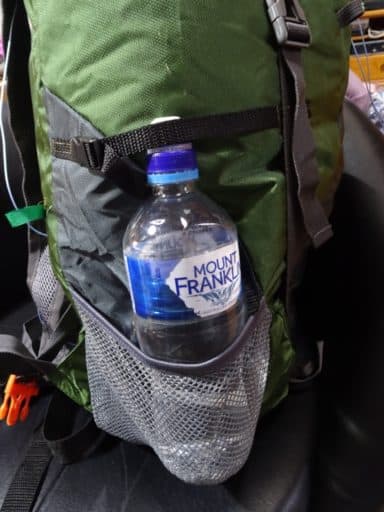
Other side containing my Pocket Poncho Tent attached with a 2 gram Niteize S-Biner as a safety measure. You don’t want to lose your tent. There is still room in this pocket for a folding umbrella. Ther is also room on the back zip pocket for a raincoat. Phones, sunscreen, snacks for the trail (all sorts of things) will fit in the lid pocket. I would probably keep my passport, hunting licence, wallet or other such documents in the hidden inside pocket of the lid. I have no immediate use for the hydration pocket.
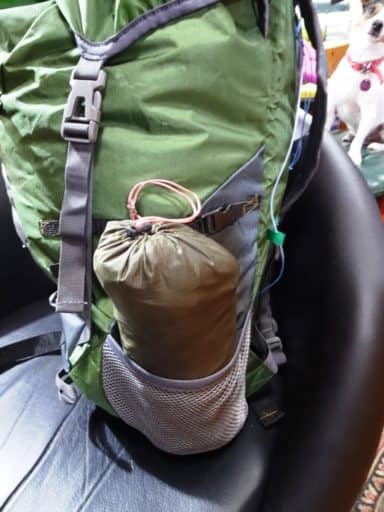
This is a microfibre towel from a $2 shop. I have sewn buttons and button holes to it so it can enclose the Gossamer Gear Sitlight pad I have punched additional holes in for ventilation. (They now have a new one which might work even better).
NB: Their new one the Airflow definitely is the answer. It is what we are now using on all our packs. (US$24 May 2020)
For the budget conscious Aliexpress have foam sit pads for less than US$2. You could punch a lot more holes in them with a wad punch than I have. I figure the microfibre towel will add some wicking/drying – and I carry one anyway. Something with more holes, more channeling would work better (eg a section of a Z-lite pad. Again a better wicking material such as this one from Ripstobytheroll would no doubt work even better. Nothing I have tried works better than this. I may try to make one out of carbon fibre rods which is a bit better shape (and weight).
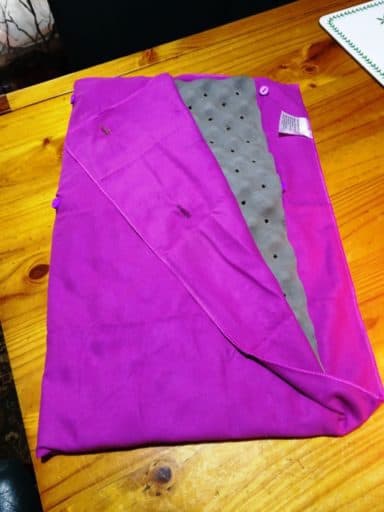
Here’s how it fits on the pack.
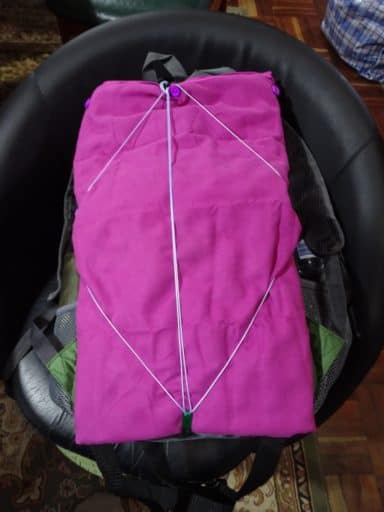
Della thinks this pack will be just about perfect for her. It suits me fine too, and I am out of pocket less than $30!
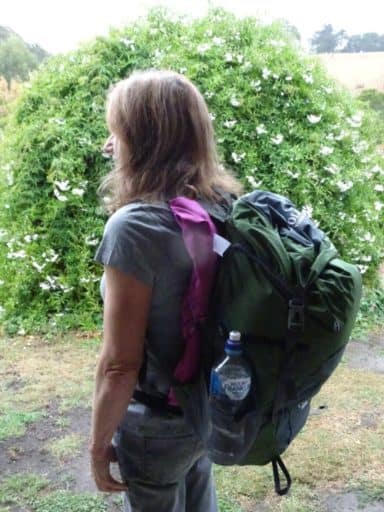
PS: The packs went wonderfully on the Everest base Camp Trek: https://www.theultralighthiker.com/2019/12/01/ebc-gear-list/
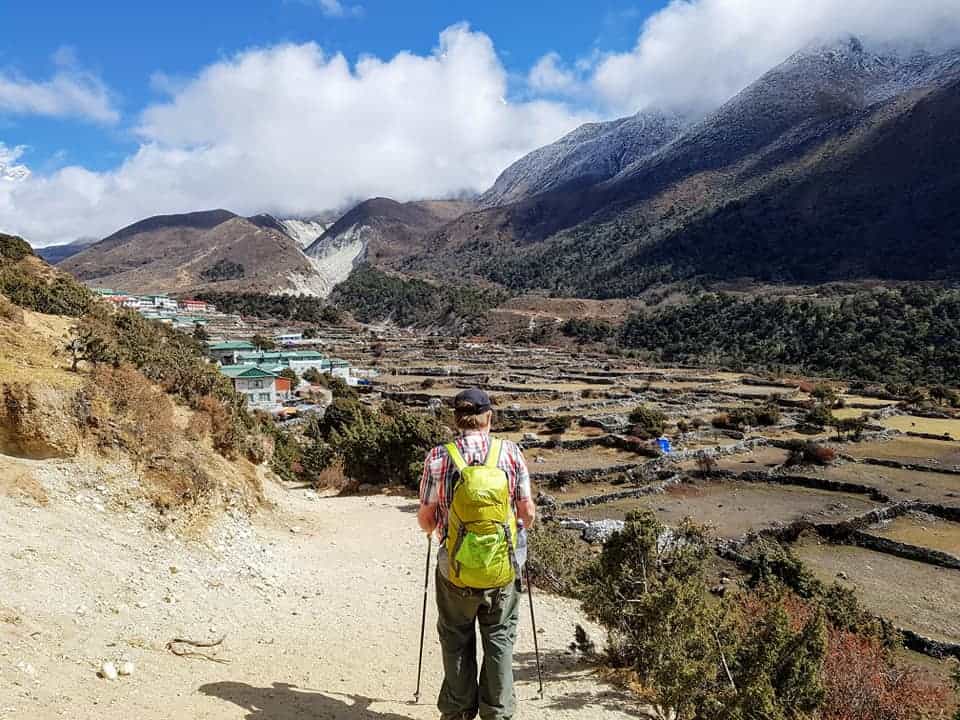
First Published Mar 24, 2018
See Also:
http://www.theultralighthiker.com/ultralight-hiking-on-a-budget/
http://www.theultralighthiker.com/ultralight-ultracheap-backpack/
http://www.theultralighthiker.com/poly-tent-by-the-ultralight-hiker-on-the-cheap/
http://www.theultralighthiker.com/new-fancy-feast-stove/
http://www.theultralighthiker.com/60-diy-ultralight-hiker-ideas/

